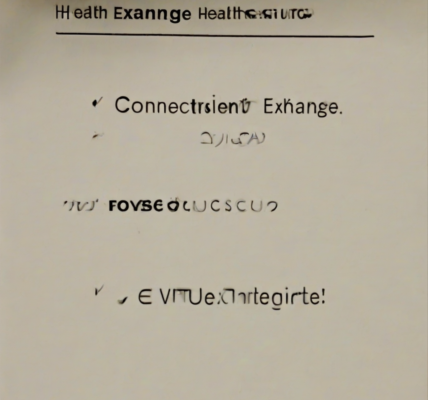Navigating the Branch Insurance Exchange: A Comprehensive Guide
The insurance landscape is complex, and finding the right coverage can feel overwhelming. For those seeking health insurance, understanding the intricacies of an insurance exchange is crucial. This guide delves into the specifics of a branch insurance exchange, explaining its functionality, benefits, and potential drawbacks. We will cover key aspects from enrollment processes to plan comparisons, helping you navigate this important step in securing your healthcare.
Understanding Branch Insurance Exchanges
A branch insurance exchange, in its simplest form, refers to a localized or specialized component of a larger insurance marketplace. While the term doesn’t have a universally standardized definition, it generally implies a system designed to facilitate insurance access within a specific geographic area, employer group, or demographic segment. This could involve a dedicated website, a partnership with local organizations, or a streamlined process within a broader exchange platform. The key differentiator is its focus on a specific branch or segment of the population.
- Geographic Focus: Some exchanges may focus on a specific state, county, or even a city, offering plans tailored to the local healthcare market and provider networks.
- Employer-Sponsored Exchanges: Larger employers may establish private exchanges to offer employees a choice of plans, often with contributions or subsidies from the employer.
- Demographic Targeting: Exchanges might cater to specific demographics, such as young adults, retirees, or individuals with specific health conditions, offering plans that address their unique needs.
- Specialized Needs: Branches may concentrate on specific insurance types beyond health, such as dental, vision, or life insurance, creating a one-stop shop for related coverage.
Key Features of Branch Insurance Exchanges
Branch insurance exchanges are designed to offer several key advantages to consumers and providers. These advantages often stem from the focused nature of their operation. However, it’s crucial to understand both the benefits and potential drawbacks before engaging with such an exchange.
- Simplified Plan Selection: By narrowing the focus, branch exchanges can present consumers with a more manageable selection of plans, making the comparison process less overwhelming.
- Localized Provider Networks: Plans offered through a geographically focused branch exchange often feature provider networks tailored to the local area, ensuring access to familiar doctors and hospitals.
- Targeted Subsidies and Assistance: Some branch exchanges may offer specific subsidies or assistance programs tailored to their target demographic, making coverage more affordable.
- Streamlined Enrollment: The focused nature of branch exchanges can lead to a more efficient and user-friendly enrollment process.
- Personalized Support: Smaller exchanges may offer more personalized customer service and support, addressing individual needs more effectively.
Potential Drawbacks of Branch Insurance Exchanges
While branch insurance exchanges offer several benefits, it’s important to be aware of potential downsides before making a decision. These limitations often arise from the narrower scope of operations.
- Limited Plan Choices: The focus on a specific area or demographic may result in a smaller selection of plans compared to a broader, national exchange.
- Higher Premiums: Depending on the market dynamics within the specific branch, premiums may be higher than in other regions or through larger exchanges.
- Reduced Network Access: While focused on local providers, the network may still be smaller than national networks, potentially limiting access to specialists or specialized care.
- Lack of Transparency: Smaller or less established branch exchanges may lack the transparency and regulatory oversight of larger, national exchanges.
- Limited Consumer Protection: In some cases, consumer protection measures may be less robust in smaller branch exchanges.
Comparing Plans on a Branch Exchange
Navigating the plan selection process on a branch exchange requires careful consideration of several factors. Understanding these factors will help you choose the plan that best fits your needs and budget.
- Premium Costs: Consider the monthly premium cost, taking into account any subsidies or employer contributions.
- Deductibles: Understand the amount you’ll need to pay out-of-pocket before insurance coverage kicks in.
- Copays and Coinsurance: Review the costs you’ll pay for doctor visits, hospital stays, and other services.
- Network Providers: Verify that your preferred doctors and hospitals are included in the plan’s network.
- Prescription Drug Coverage: Assess the plan’s formulary and coverage for prescription medications.
- Out-of-Pocket Maximum: Determine the maximum amount you’ll pay out-of-pocket for covered services in a given year.
Enrollment Process on a Branch Exchange
The enrollment process on a branch exchange will vary depending on the specific exchange and its rules. However, there are some common steps you can expect.
- Determine Eligibility: Check your eligibility based on income, residency, and other requirements.
- Create an Account: Register on the exchange’s website or through a designated enrollment partner.
- Provide Information: Supply necessary personal and financial information.
- Compare Plans: Review and compare available plans based on your needs and budget.
- Select a Plan: Choose the plan that best meets your requirements.
- Enroll and Pay: Complete the enrollment process and make your first premium payment.
Accessing Support and Resources
Most branch insurance exchanges provide various support resources to help consumers navigate the enrollment process and understand their coverage. These resources can be invaluable in making informed decisions.
- Website Resources: Many exchanges offer detailed information on their websites, including plan comparisons, FAQs, and enrollment guides.
- Customer Service: Contact the exchange’s customer service department for assistance with enrollment or plan questions.
- Enrollment Assistance: Many exchanges offer enrollment assistance through trained professionals who can guide you through the process.
- Community Resources: Local organizations and community centers may offer assistance with navigating the exchange and selecting a plan.
The Future of Branch Insurance Exchanges
The landscape of branch insurance exchanges is constantly evolving. Technological advancements, changing healthcare policies, and shifts in consumer preferences are likely to shape the future of these specialized marketplaces. Expect to see increased integration of technology, personalized plan recommendations, and a greater emphasis on consumer transparency and protection.
- Increased Technology Integration: Expect to see more sophisticated online tools and platforms for plan comparisons and enrollment.
- Personalized Plan Recommendations: Artificial intelligence and data analytics may play a larger role in recommending plans tailored to individual needs.
- Enhanced Consumer Protections: Regulatory bodies may strengthen consumer protections to ensure fair practices and transparent pricing.
- Greater Transparency: The industry is likely to see increased efforts to improve transparency in pricing and plan benefits.




